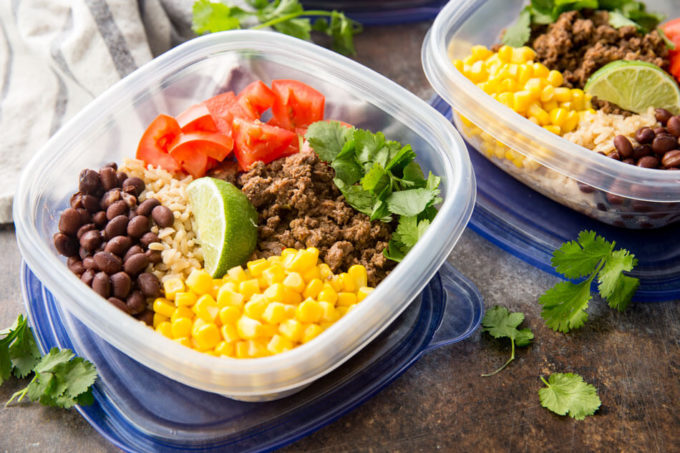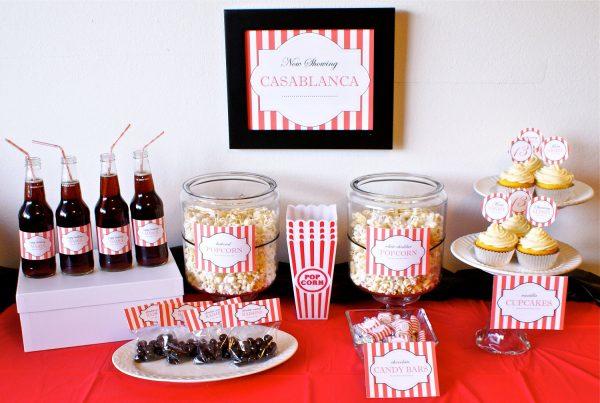One of the best pieces of advice that I have for people in terms of saving money is to
get into the habit of preparing your own homecooked meals at home – Restaurants are expensive. Takeout is expensive. Delivered food?
Expensive. Prepackaged meals? Expensive. All of that stuff drains your
wallet far faster than you might realize.
So, what’s the argument against cooking at home? Many meals require
some degree of skill to make and although that skill level is often
pretty low, it’s still present. There’s also the time issue and the
energy issue and the equipment issue – each solvable, of course, but
they again provide resistance against preparing food at home.
So, here are six basic things you can do to work towards effortless meal preparation at home.
1. Experiment when you have more time in the kitchen.
The time to learn how to cook is not when you come home from a long
day at work and feel absolutely exhausted, or when you just don't have the time and can’t afford anything going wrong. Often,
people find themselves in these positions without any sort of cooking
skills which makes cookin
g feel overwhelming or impossible.
2. Plan a little.
While it’s fun to imagine a home chef just throwing things together
based on whatever’s in the cupboard, the truth is that it only really
works if you have a lot of staples on hand, and if you’re reading this
article, you probably don’t have a lot of staples on hand and also
probably don’t have any ideas of how to use them.
That’s why, at first, it’s a really good idea to follow recipes carefully. A good recipe tells you what you need to have on hand right at the
start, so plan ahead a little and make sure you have all of those things
on hand. This will probably involve a trip to the grocery store, but
it’s far better to do that before doing anything else.
3. Make a dump meal.
This is about the easiest thing you can make at home. It basically just
requires a slow cooker – it’s really the only kitchen implement you need
for this. All you have to do is just put a small set of ingredients in
there in the morning, turn it on low, and come home to a finished meal.
Some of the ingredients might require a cutting board and a knife to
chop up a vegetable or slice up a piece of meat, and you might need a
can opener. It can’t get any easier than this – in fact, I find such
meals to be less hassle than actually ordering food or going to a
restaurant, and they’re cheaper, too.
4. Make macaroni and cheese.
Almost everyone likes macaroni and cheese. It’s such a simple, pleasant
food that can be made incredibly straightforward to please children or
fancied up to please almost any palate. It’s also one of the easiest
things on Earth to make, so I usually encourage people to make this as
one of the first things they prepare in the kitchen. Each of my children
– all of them pre-teen – have pulled this off with success.
5. Make scrambled eggs.
If
you like to eat scrambled eggs at all, I strongly encourage you to
learn how to make scrambled eggs. It’s an incredibly simple and flexible
thing you can make for yourself or your family, it works with every
meal, you can mix in almost anything savory, and it reheats well if you
have extras.
Just crack a number of scrambled eggs in a bowl – however many you
like – and beat them with a fork until they’re consistently yellow, a
minute or two. Add a bit of salt and beat that in for a few seconds,
then let the bowl sit.
Take a teaspoon of butter and put it in the middle of a skillet. Put
it over medium heat and let the butter melt, then use a plastic spoon or
a spatula to move the butter all over the skillet until the skillet is
coated. Add the scrambled eggs and let them cook for a minute, then
slowly pull that plastic spoon or spatula along the bottom of the
skillet to pull up egg curds off of the skillet’s bottom. Do this over
the entire bottom of the skillet, then repeat every thirty seconds until
the eggs look like slightly wet version of the scrambled eggs you’d
normally eat, then remove from the heat, wait a minute or so, and serve.
You can obviously mix lots of things into this recipe. Almost any
savory vegetable works, as do most cooked meats and most cheeses. It all
turns out delicious and with such little effort.
6. Handle Dirty Dishes the Smart Way
One of the big obstacles for many people in terms of cooking at home
is dealing with the cleanup. If you eat at a restaurant, it’s done for
you; if you get takeout or delivery, you can just toss the wrappers and
other items. On the other hand, if you cook at home, you have to deal
with all of that stuff.
A dishwasher makes it much easier, but even then, there’s some extra
work involved. Also, many apartments and some homes (like my parents’
home) don’t have a dishwasher and don’t have space for one.
Here are a few strategies I know
from having lived most of my life in places with a kitchen too small
for a dishwasher.
Have good tools. Have a strong scrubbing
brush and a dish rag at your sink, along with good soap at hand. If you
don’t have those things, it’s going to take far longer to wash dishes.
If you have a two bin sink, keep one sink full of water with a bit of soap in it.
Just block the drain, fill it perhaps a quarter full with hot water,
and add a bit of soap. Then, put your dishes right in that soapy water
throughout the day, perhaps adding a bit more hot water once in a while.
Just let the dishes soak. It’ll make it much easier to wash them when
the time comes, and the other sink bin will be free.
If you have a one bin sink, get a large plastic bin, put it beside the sink, and keep your dirty dishes in there.
This keeps the sink free of dishes so that you can easily start in with
cleaning whenever you’re ready. Just toss dirty dishes in the bin for
the moment, then wash everything in the bin at once when you’re ready.
Since the sink is empty, you can dive right in. If the bin is
watertight, you can put a bit of hot soapy water in there to soak some
of the dishes, as noted above.
If something has caked-on grease or food pieces, pour a
bit of vinegar, a bit of baking soda, and a bit of soap in it and fill
it with hot water and let it sit for a long time, like a day. After that, it becomes really easy to wash. This takes care of basically every nasty caked-on grease problem I’ve ever faced.
Wash things in “streak order.” What do I
mean by “streak order”? Start with stuff that will show streaks easily –
glass items – then move onto silverware, then plates and plastic items,
then pots and pans.
Have a drying rack beside your sink to put dishes in to dry, plus a ton of drying towels. Most things can air dry relatively quickly once rinsed, but a drying
towel is great if you need something dry immediately.
Buy dish soap in bulk, then have a pump to dispense it.
You don’t really want a bulk bottle of dish soap at your sink because
it’s heavy and it takes up lots of space and when you pour it, it
dispenses large amounts of soap. However, bulk soap is cheap.
These tactics turn hand washing dishes into a pretty
easy task, even if you don’t have a dishwasher.
Final Thoughts
If you can handle the things above, you’re already well on your way
to cooking a wide variety of things at home. Move on to trying other
simple dishes – pasta, for example, is incredibly simple – and try
variations on the things you already know, like adding tarragon to the
scrambled eggs.




























